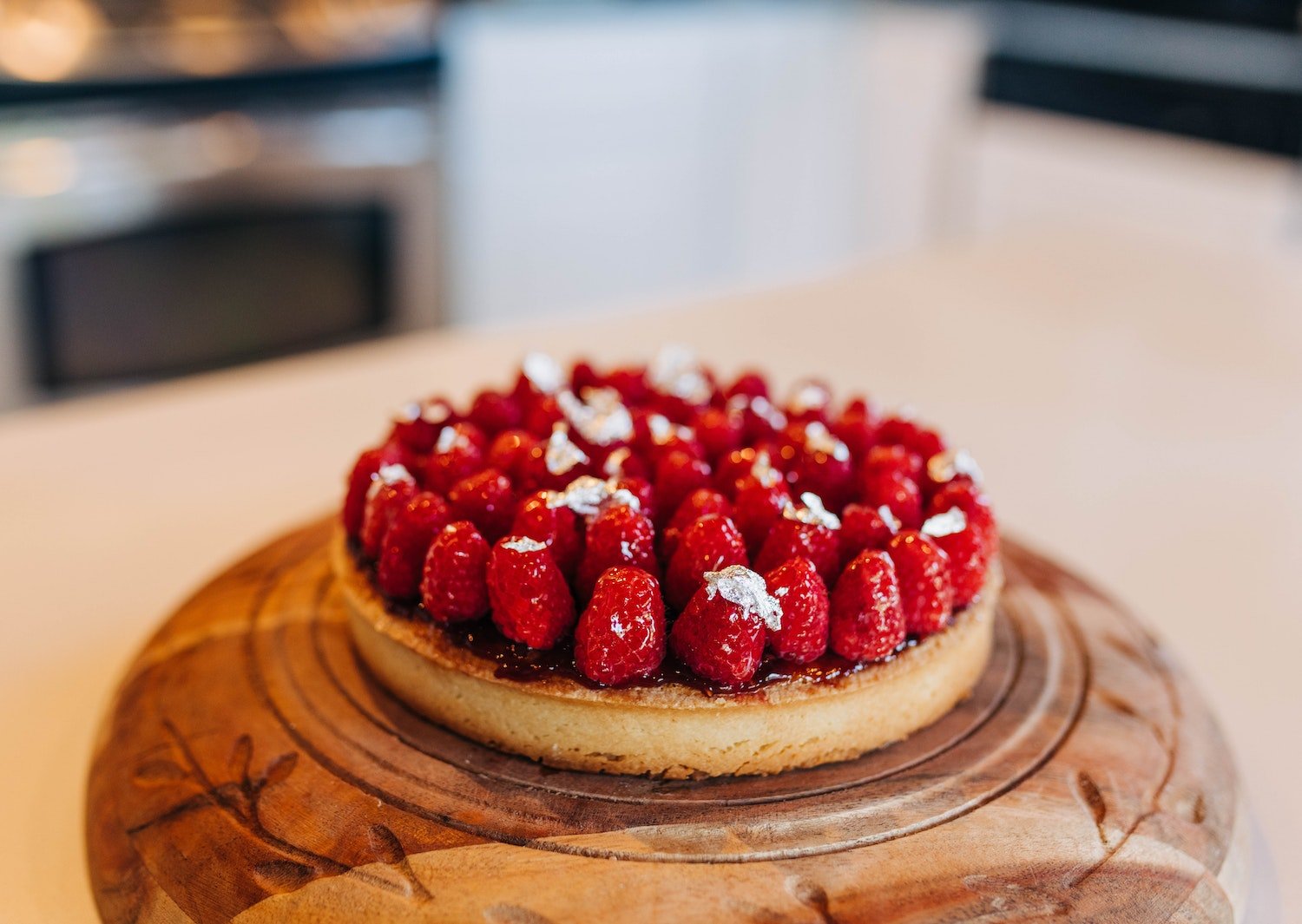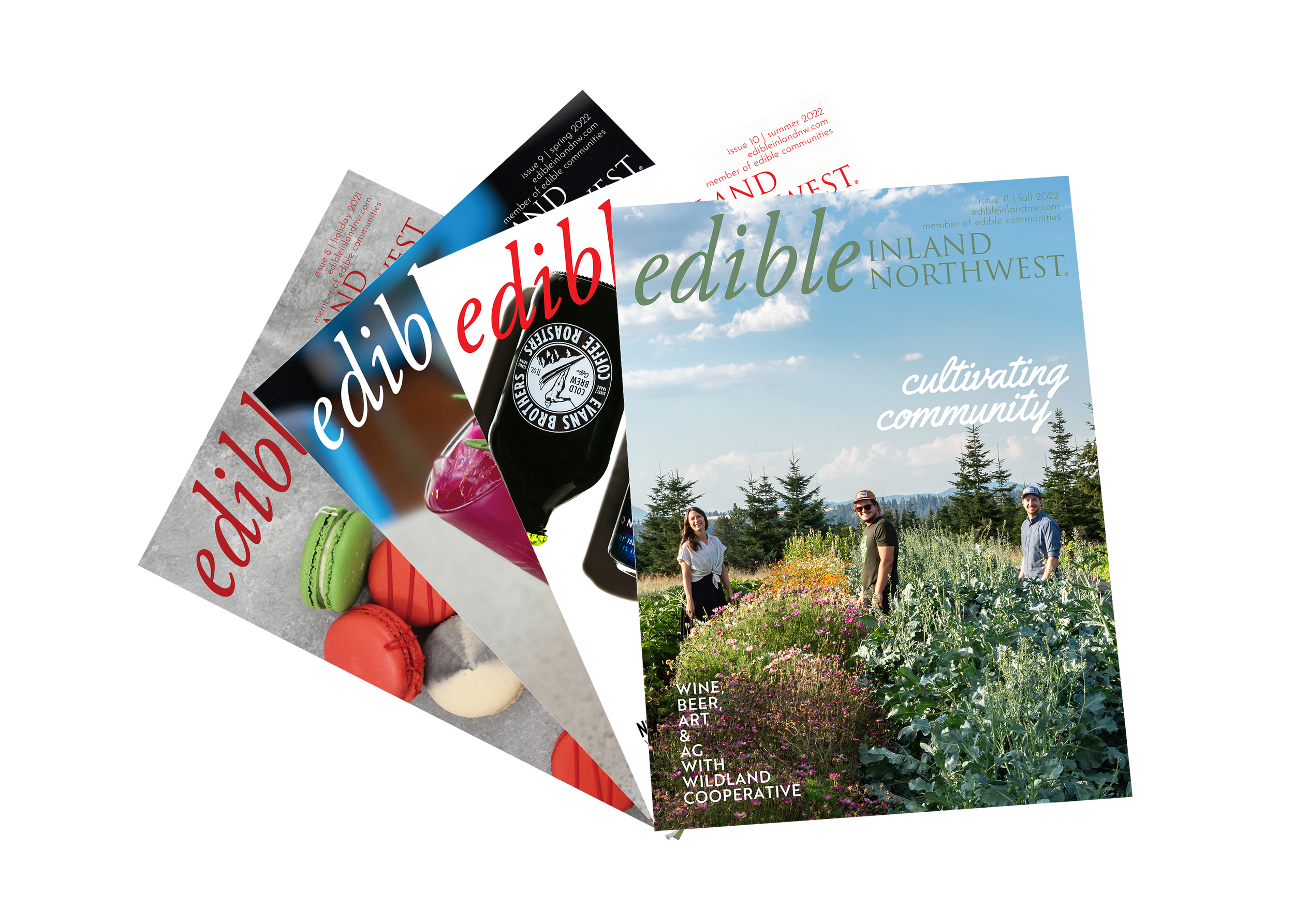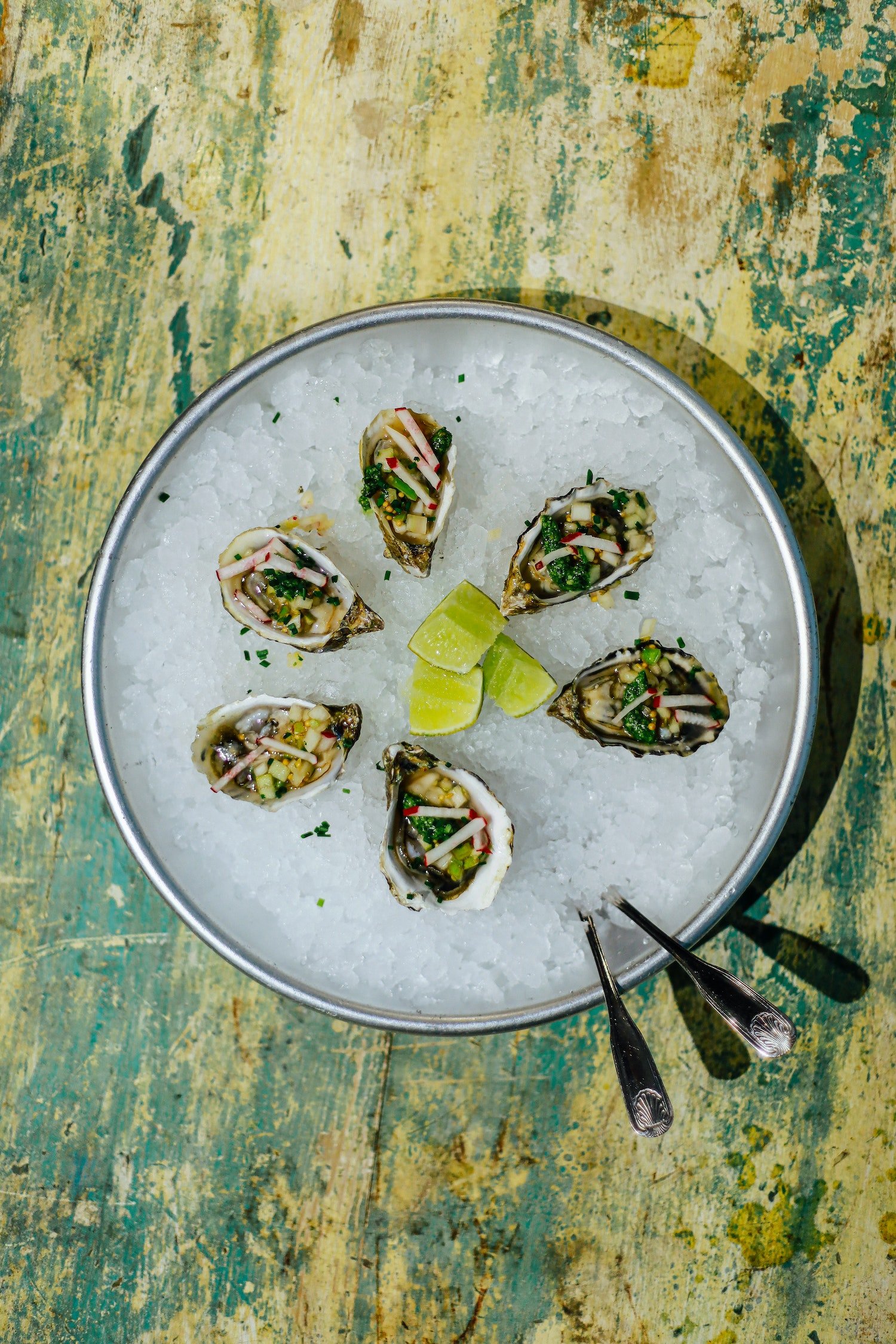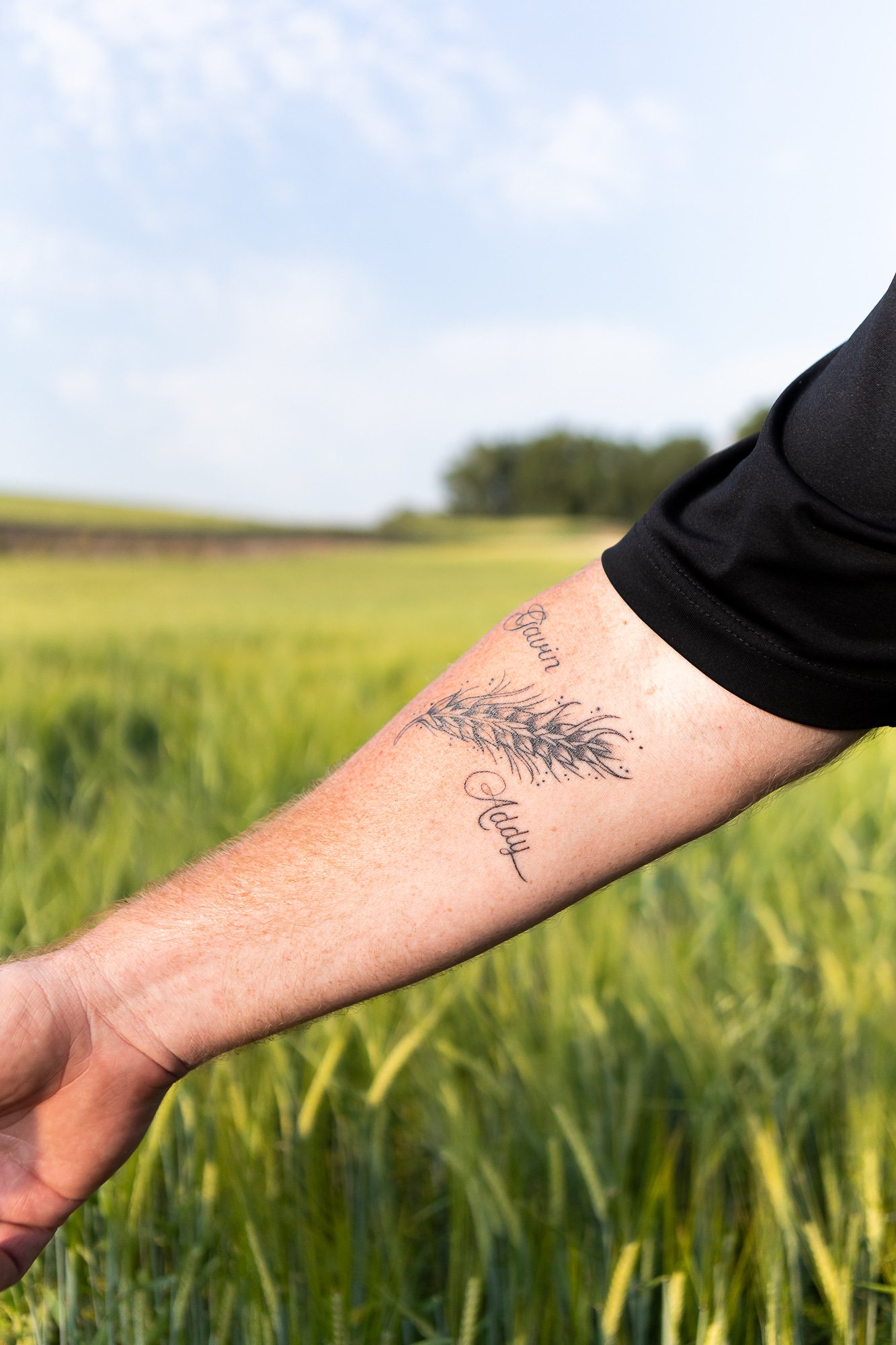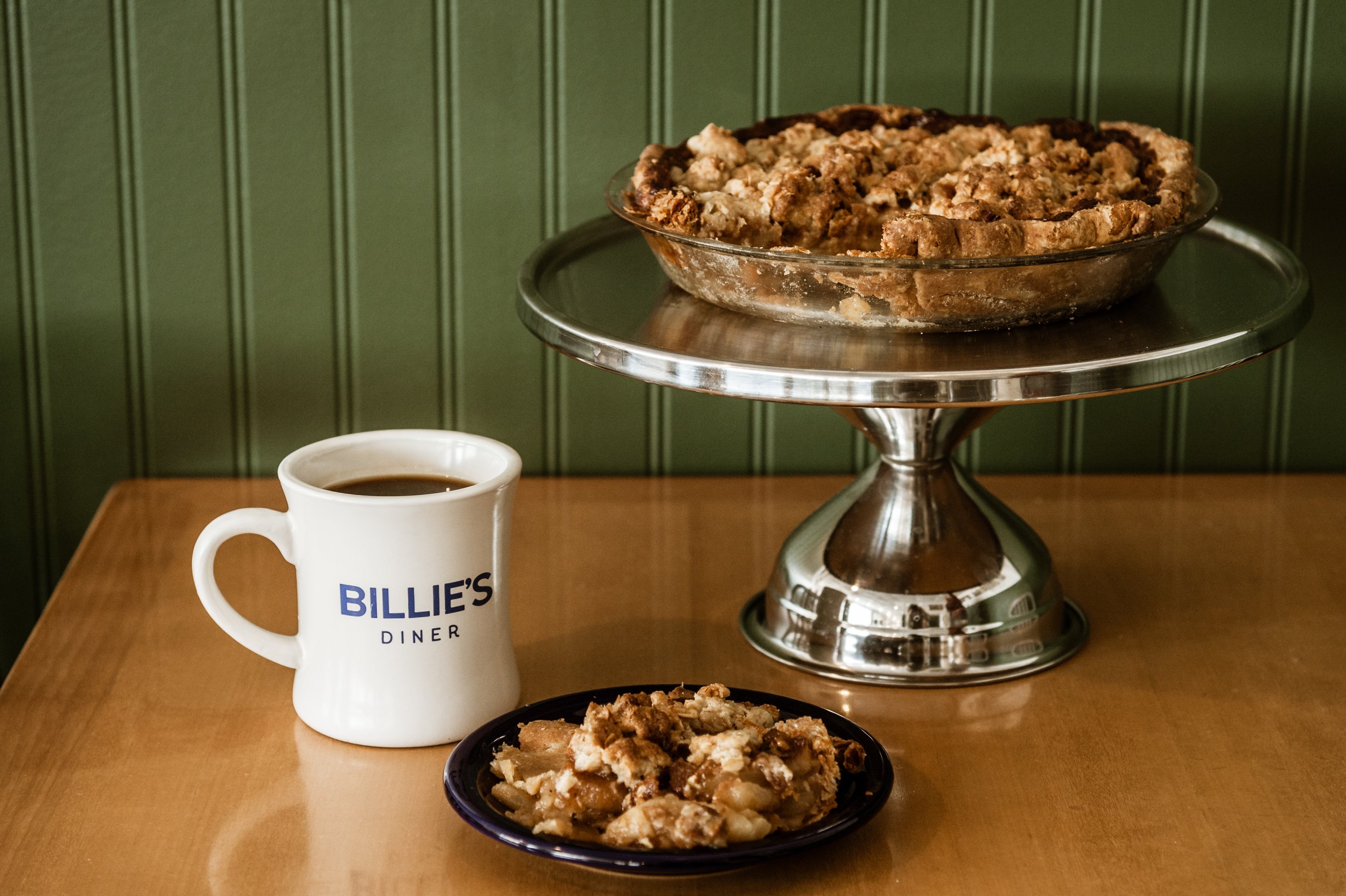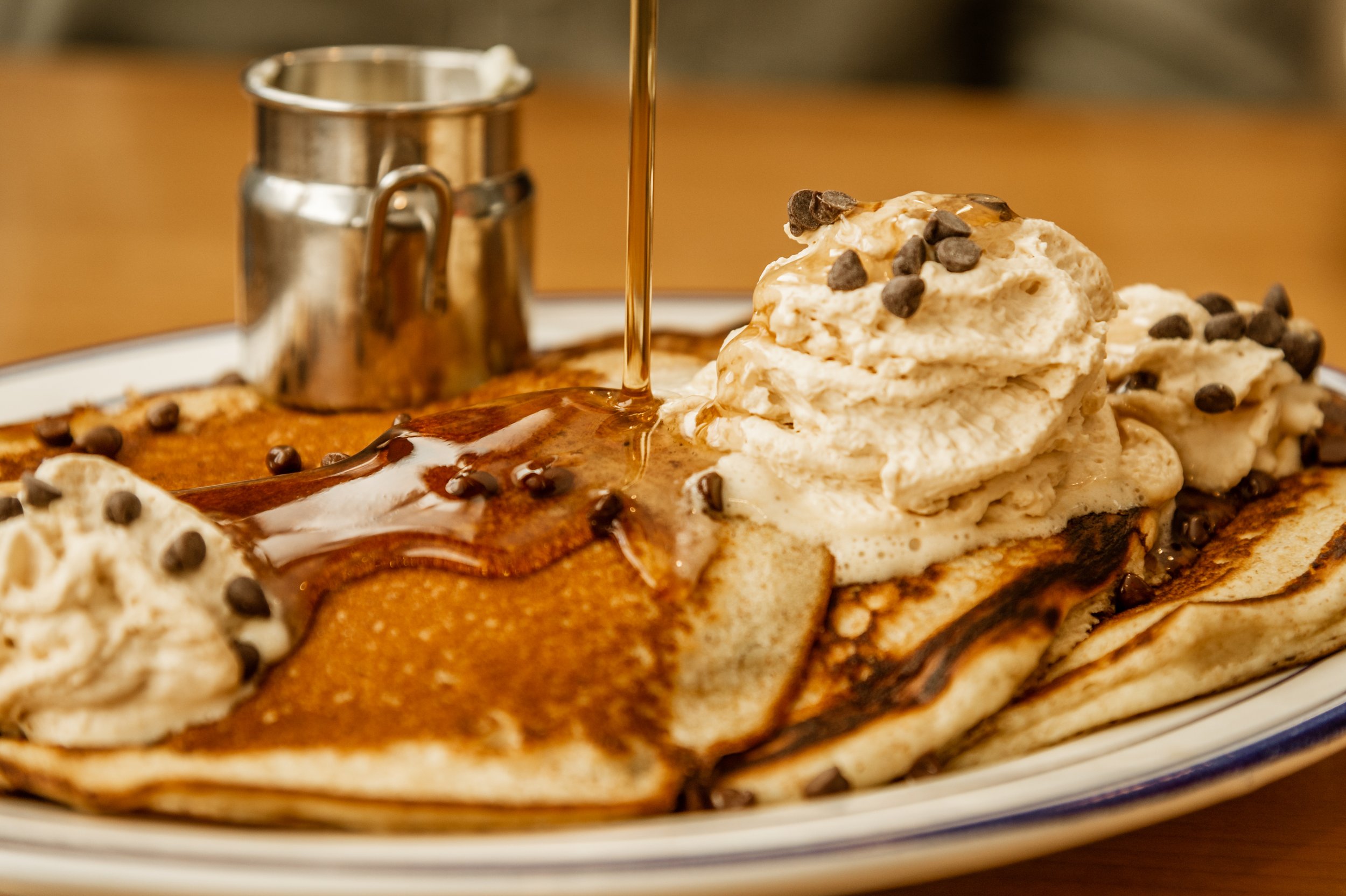Regenerating Spokane, One Yard at a Time
Regenerating Spokane, One Yard at a Time
BY SYDNEY FLUKER
When Sam Kalk arrived at work on April 1, Bud Light cans swung gently in the breeze, dangling off the bare branches of one of the yard’s few trees.
“One of the neighbors did it as an April Fools joke,” Kalk laughs. “Spring is budding.”
I arrived mid-afternoon that same day, and the cans still swung proudly in the breeze. The team was nearing the end of its work on this yard, having spent seven days on the complete relandscaping of the Monroe Ash neighborhood home.
Turfgrass was replaced with mulch and native plants like buckwheat and penstemon that will bloom in the coming months as they slowly cover the yard’s surface. Four elevated garden beds filled with soil sit adjacent to the house over a newly hardscaped gravel walkway. Almost 20 tons of rock line the yard, with space for a sandstone staircase along the side.
“It’s very possible to have a beautiful yard that takes care of the environment rather than having to fight against it and be constantly weeding,” Kalk says. “It’s easier than a lot of people think.”
Dryland Revival is a regenerative landscaping company on a mission to bring the natural world back into local ecosystems through building self-nourishing systems that are easy to manage and bolster biodiversity. Aspects of the regenerative landscaping model include taking care of the soil, stewarding water more thoughtfully, planting native shrubs and not using harmful chemicals.
Regenerative landscapes are those that restore the environment and encourage long-term sustainability, increased biodiversity and enhanced resilience. Regenerative landscapes differ from sustainable landscapes in that regenerative designs aim to reduce negative impacts and produce positive benefits.
For the environment, this looks like water conservation, improved soil and air quality and the elimination of harmful chemical use, all of which leads to a resilient and restorative yard. For the yard owner, regenerative landscapes can save money by reducing maintenance labor, organic waste generation and water costs and improving moisture and erosion control, which reduces irrigation and energy needs.
“My goal is to really proliferate the message about regenerative landscaping,” Kalk says. “Why plant something beautiful if it's not good for the world around us? These companies that have their own hands in the soil all the time should be doing a little bit more in that way, and my goal is to lead the conversation.”
Kalk originally worked in tech sales for a Seattle-based company, but it became abundantly clear his true passion lies in the soil when he found himself working in his yard any chance he had during the remote workdays. Gradually, he renovated his yard using regenerative practices he taught himself from Youtube University and trial-and-error, attracting attention and compliments from his neighbors.
“[My neighbors] were basically telling me there’s no one in the city that’s doing this as their thing,” Kalk says. “So I took that and was like ‘OK, I can start a business doing that then.’”
He successfully convinced his buddy Jacob LeVitus to join him on his entrepreneurial journey, and the two friends set out to tackle their first client’s yard with a couple of wheelbarrows and some shovels.
Around six weeks later, the project was done, but the model for moving forward needed to change. Kalk and LeVitus quickly hired more hands and by the end of their first season, they had 18 successful yards under their belt.
Now, Kalk fields two teams of around four workers, subbing himself in wherever needed. In the two years since they launched, they have regenerated around 55 lawns with more to come this summer. LeVitus is still around too, working as field operations director.
Dryland Revival is a certified contractor for SpokaneScape, a program through the City of Spokane Water Department that incentivizes residents to take out their lawn in favor of more water-conscious designs with strict rules requiring drought tolerant plants, bark or rock mulch covering exposed soil, efficient irrigation systems and more.
Since the team is certified with SpokaneScape, it's easy for them to help clients get that credit from the city, though not every lawn they design qualifies for the rebate. Of the 35 yards done last year, Kalk submitted 13 SpokaneScape applications. Still, the benefits of a regenerative landscape move beyond rebate incentives.
Native plants play a large role in regenerative landscaping and are relatively fuss-free for beginner gardeners — plus, they’re poppin’ with the pollinators. Dryland Revival’s favorite native plants are showy milkweed, Munro’s globemallow, buckwheat, thread-leaf hyssop, blue flax, serviceberry, Missouri goldenrod and prairie smoke. Though the plants require attention in their early years, many of our native plant varieties thrive on the hot, dry climate of our Inland environment and need very little water outside of natural rainfall.
There’s no gatekeeping with Dryland Revival — their motto stands at “Sowing knowledge, sharing nature.” Kalk frequently takes to Instagram to share gardening tips and fun stories with the @drylandrevival followers. His website also features more in-depth tutorials and tips on topics ranging from permaculture to building your own regenerative landscape.
Still, the team’s expertise on all things regenerative landscaping and design helps customers maximize the benefits their yard could yield.
If you are looking to give your yard an environmentally-beneficial makeover, Dryland Revival has more than a couple things to offer. The company offers custom regenerative landscaping, pre-designed packages, hardscaping, water features, foodscaping, seasonal maintenance and assistance with Spokanescape.
Whatever option you choose, rest assured the Dryland Revival team will give their all.
“I like selling something that I really care about,” Kalk says. “People buy what you believe in, and I really believe that this is a great way of doing your yard and living in our neighborhoods … I really love doing this. It means a lot to me.”
Caption: Native plants like buckwheat and penstemon in their earliest stages adjust their roots to their new homes in the soil.













